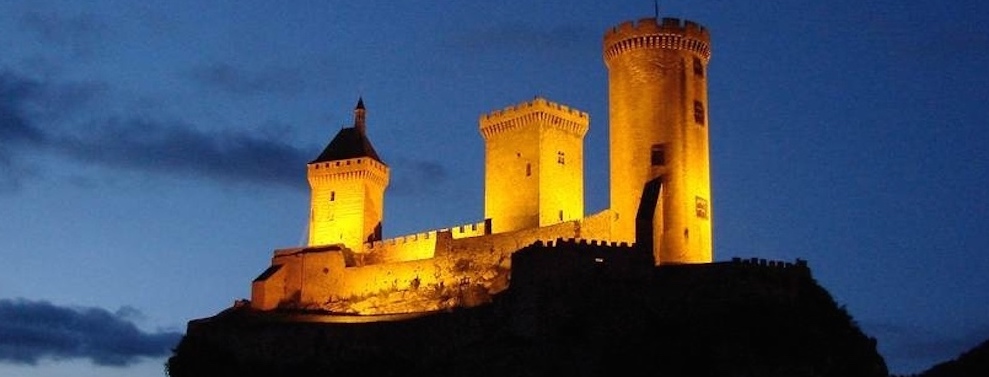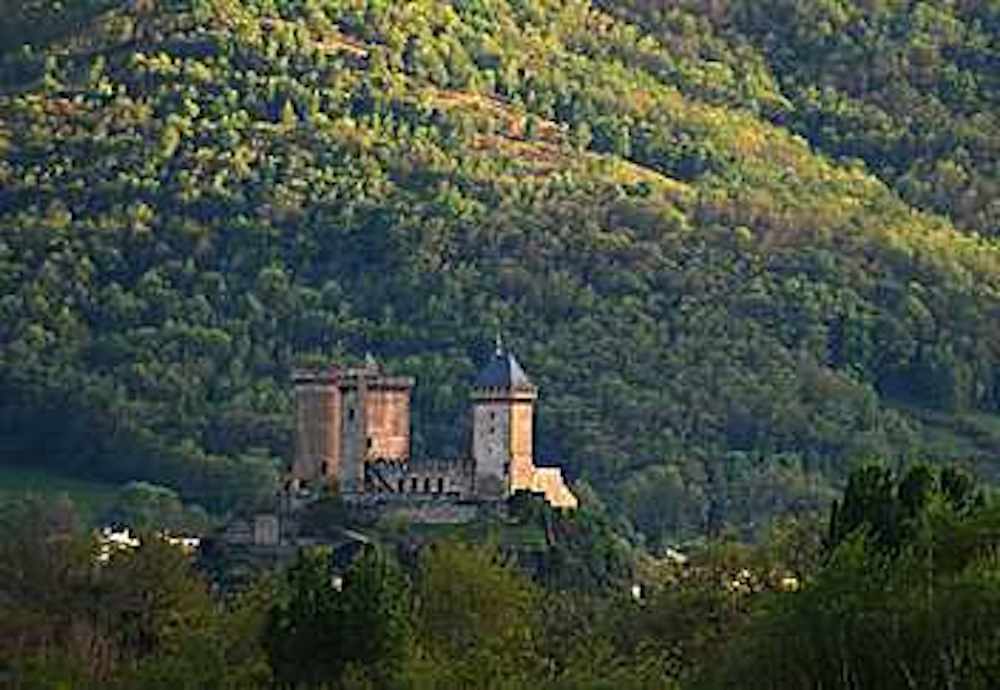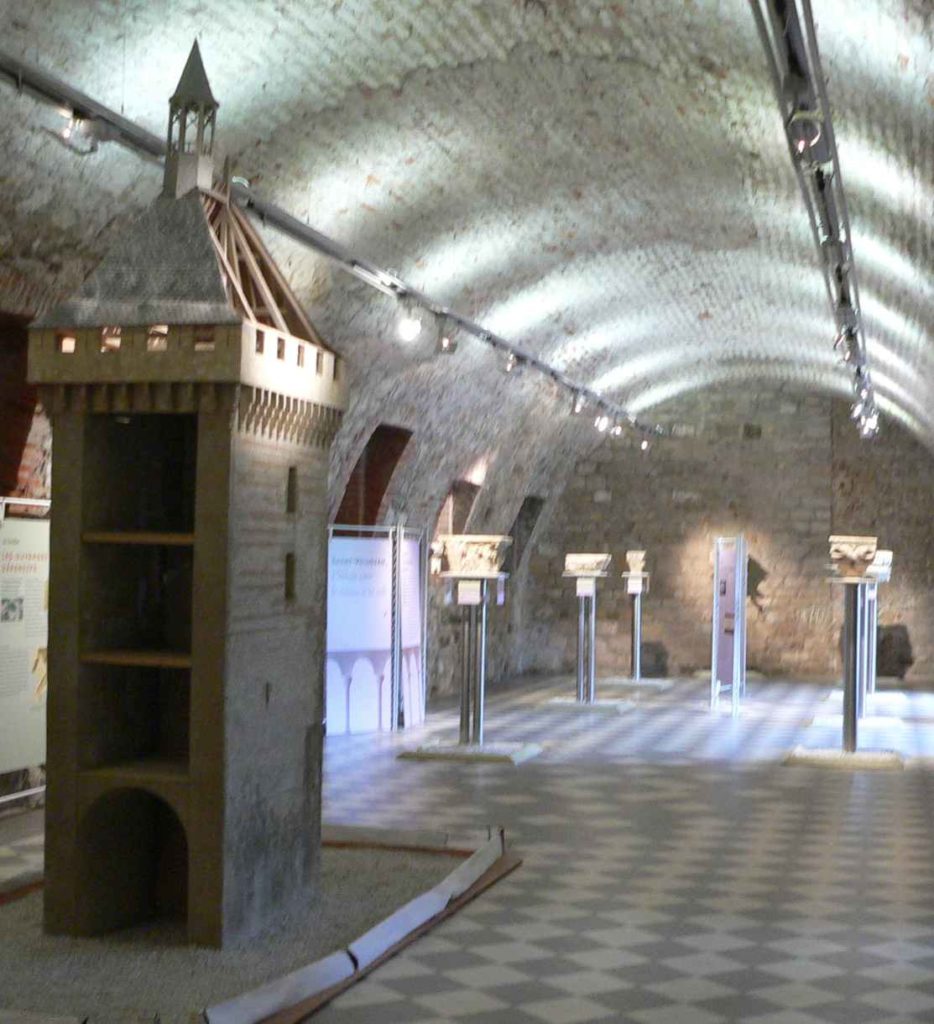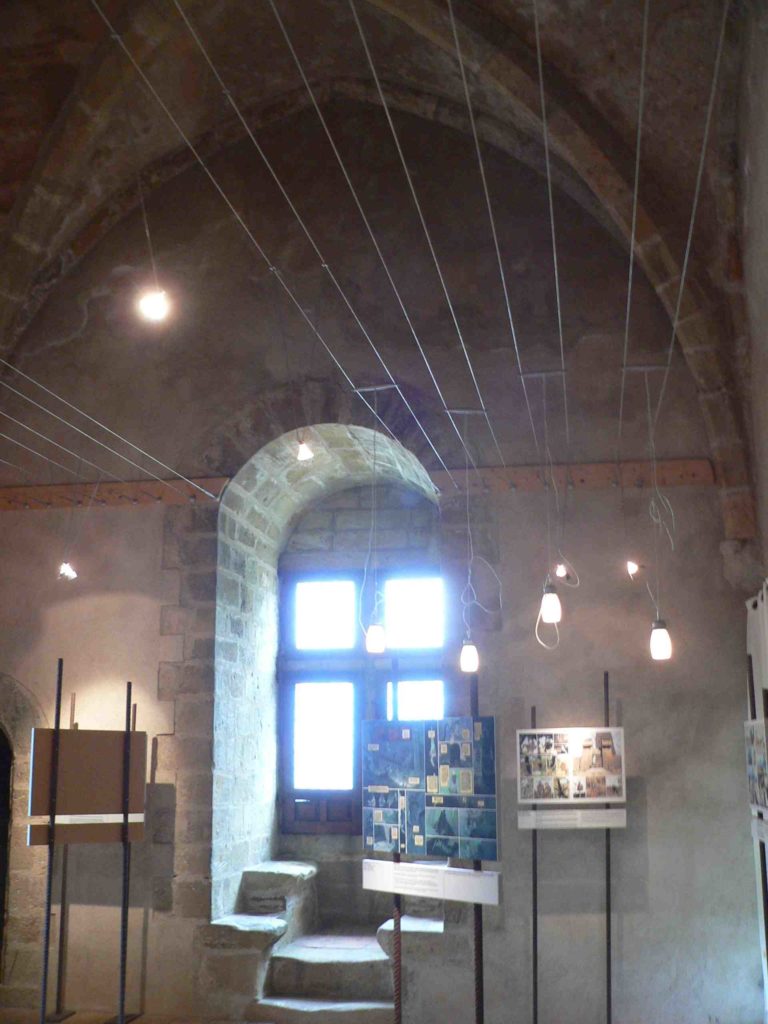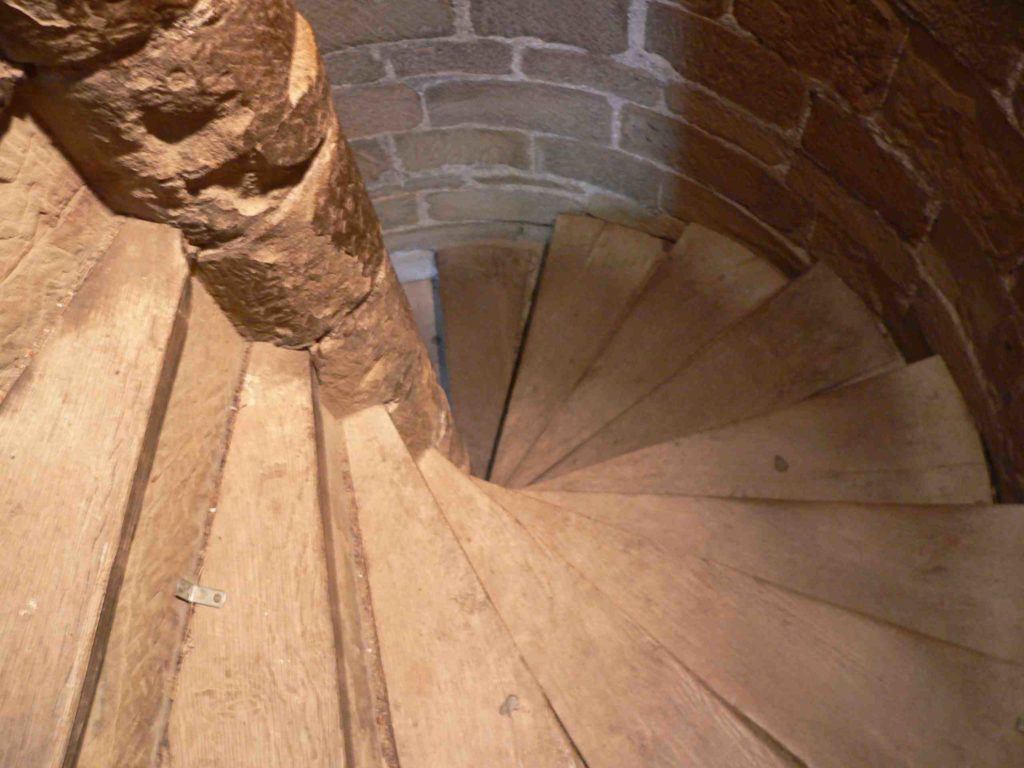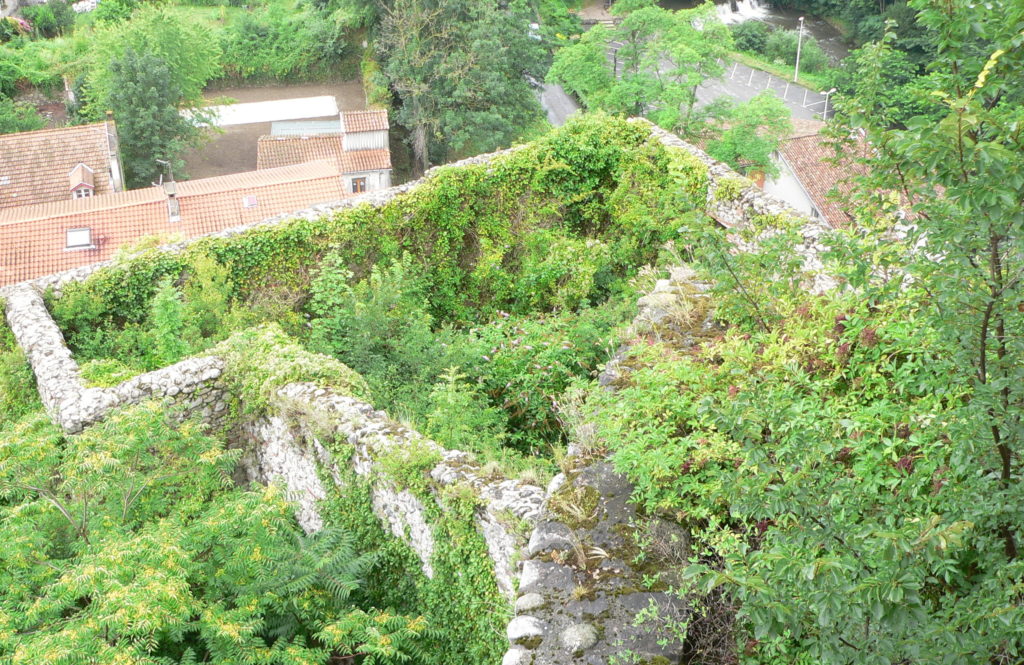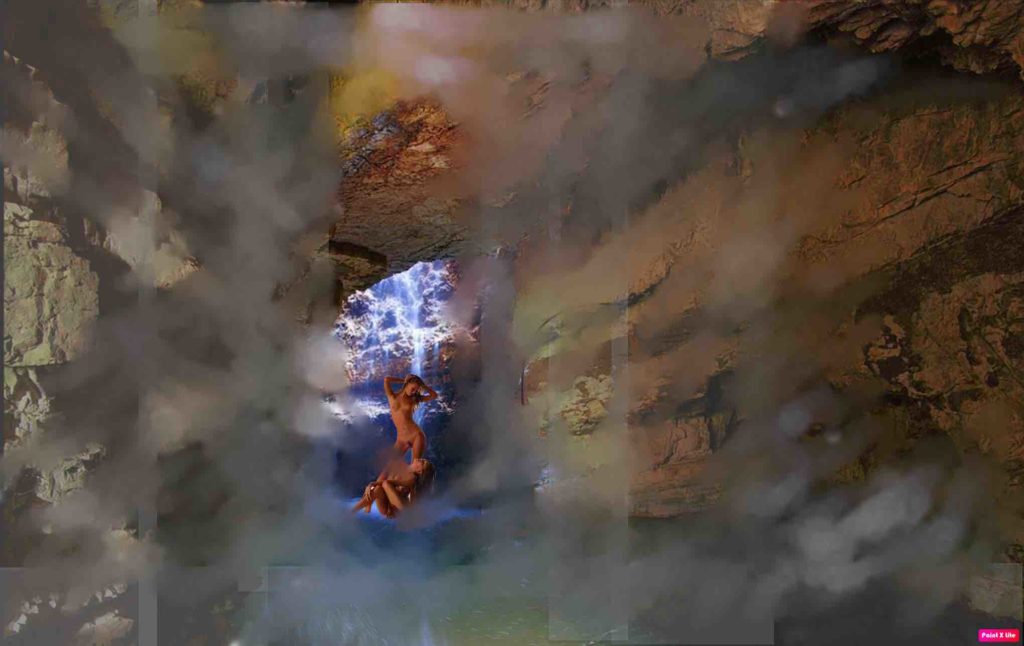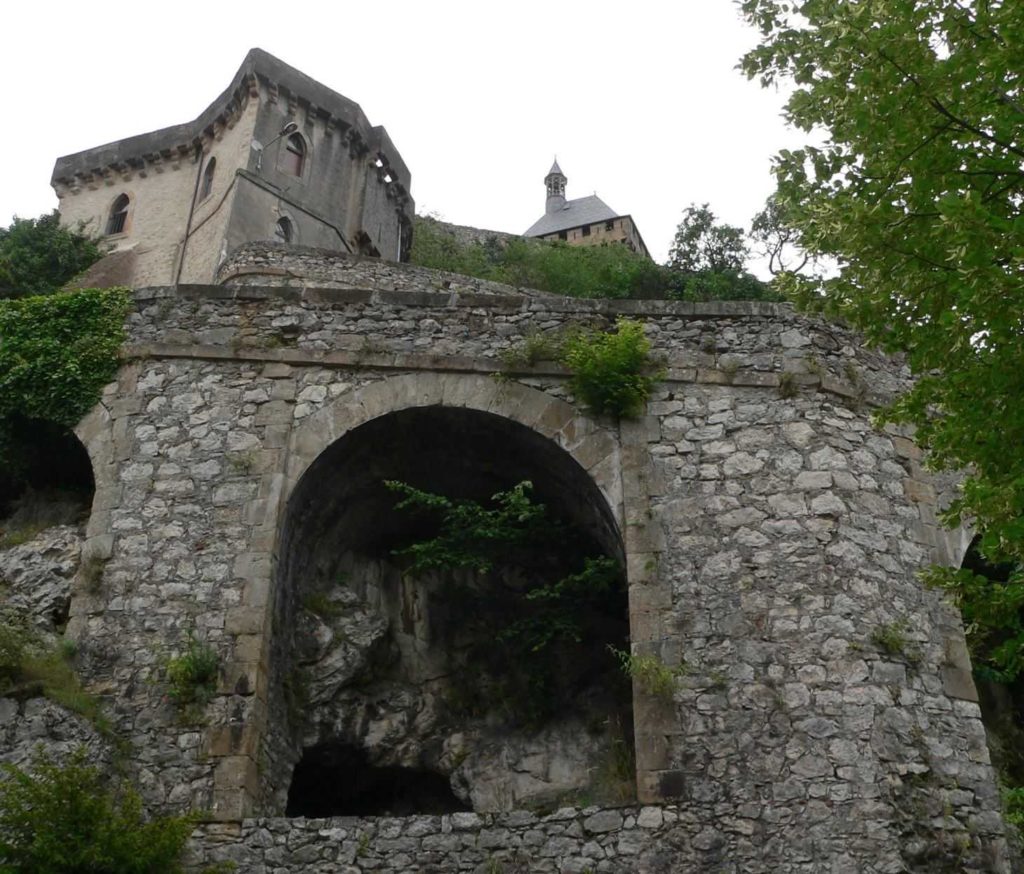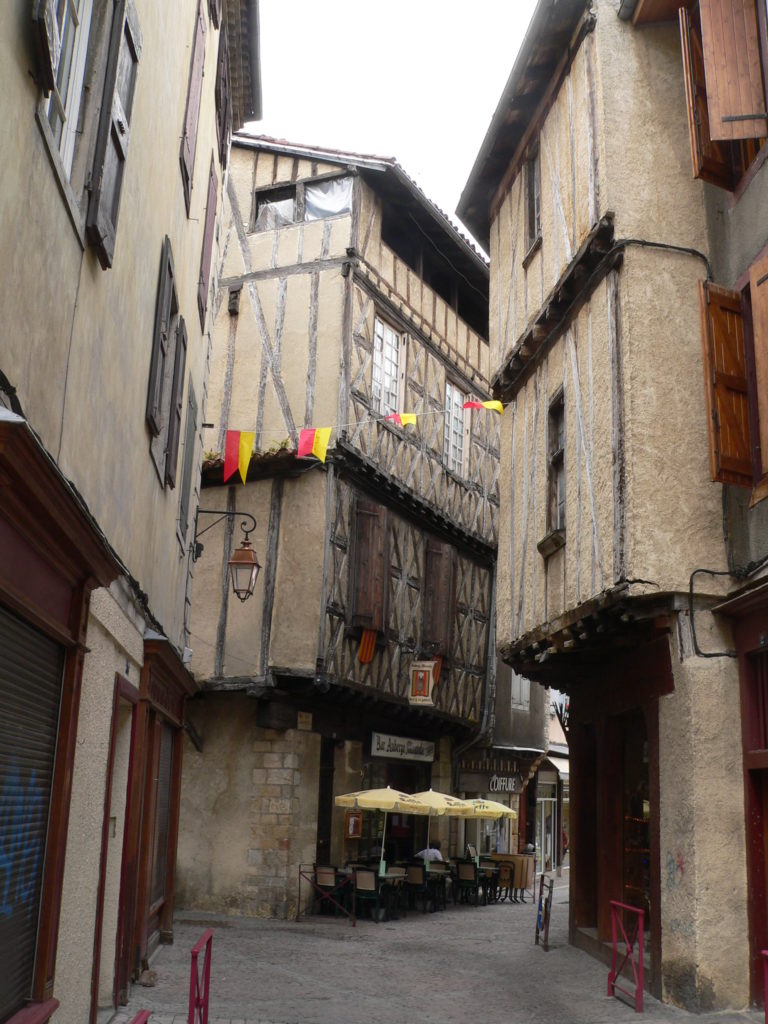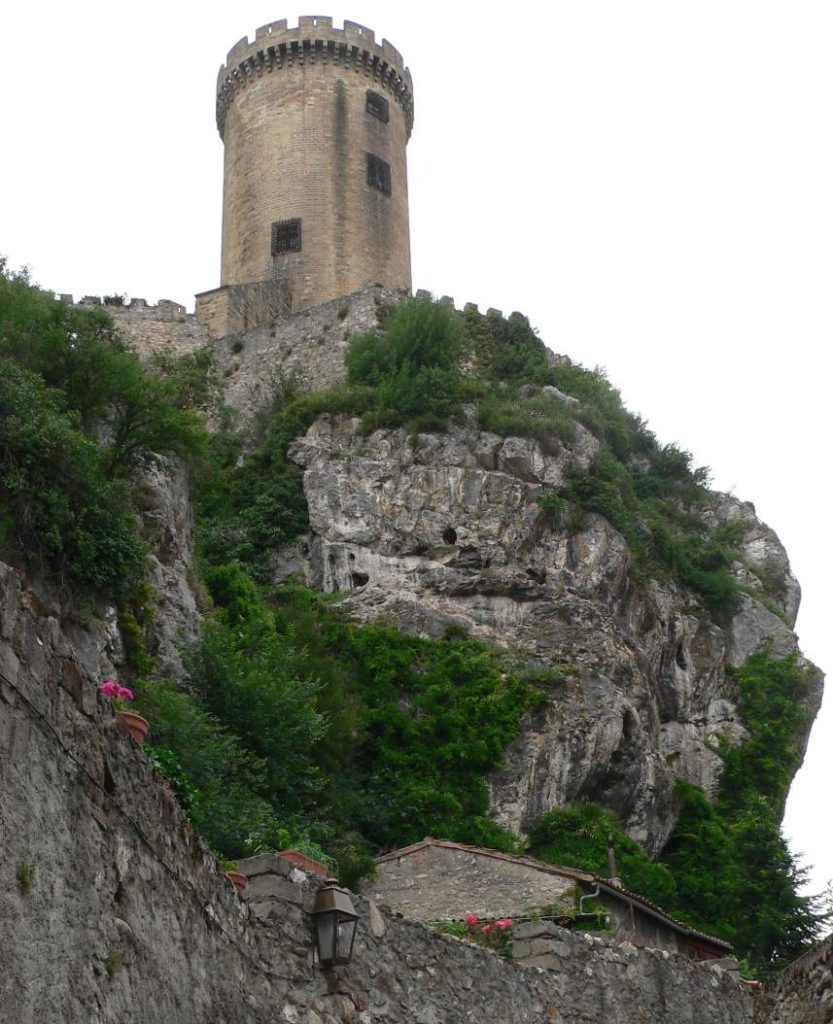In 1200 the area controlled by the Comte de Foix extended throughout the whole of Arriage and also to the south covering what is now Andorra. This eastern portion of Foix included both Mirepoix, Montsegur and the Pays du Salt but these were then ripped away and given to Jean de Levis during the Albigensian Crusade.
On this diagram the possessions of the comte de foix are shown in red. the area of english (plantagenet,ramnulfid) is shown by the white outline and Ximene trencavel’s inheritance is shown in blue.
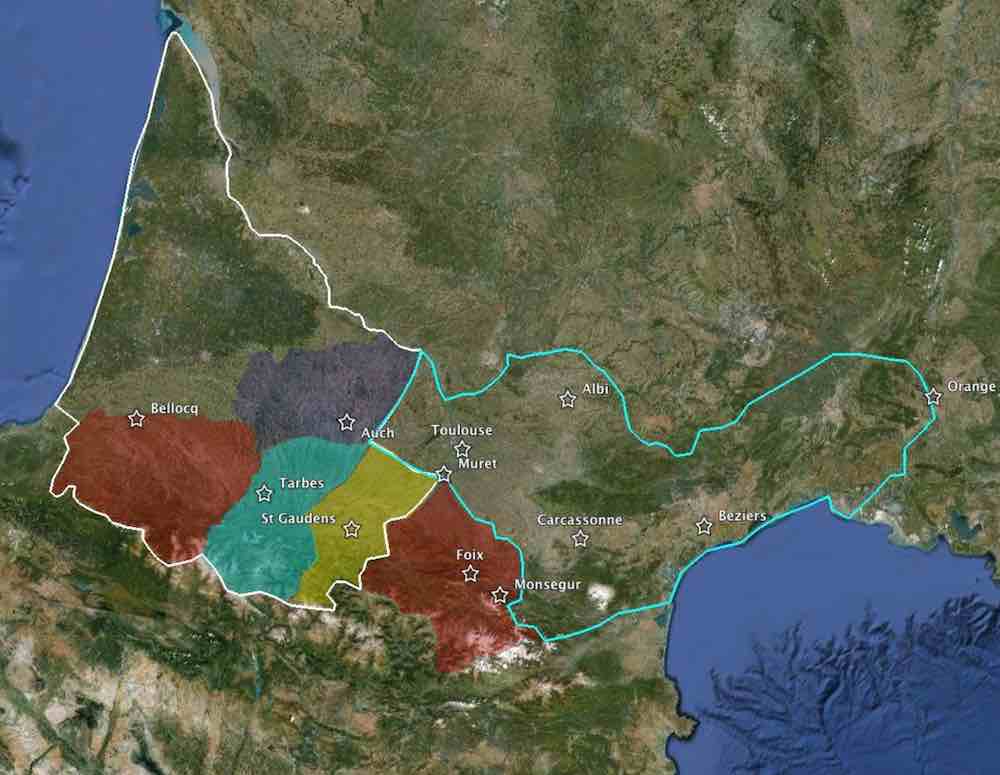 Foix and it’s Château are almost another character in the story.
Foix and it’s Château are almost another character in the story.
The view from the battlements towards the Pyrenees is always spectacular, and the eagles still soar above and around the valley.
Today Foix is in the French departement of Ariége in the Region of Occitanie.
The Château’s position on a rock in the middle of the town surrounded by the foothills of the Pyrenees is, to say the least, eye catching. In 1355 there were only two towers. ( the round tower was added later).
The accommodation in the upper fortress was far from luxurious. The great hall was really only an enclosed space over an enormous cistern. The great hall today is well illuminated. In the forground is a model of the northerly tower
The bedrooms directly off the great hall are significantly larger than the bedrooms further up the tower.
The spiral staircases are claustrophobic.
There was other accommodation built around the rock itself, unfortunately, these apartments have been allowed to fall into decay.
Access to these apartments was from the south east but with the decay of the apartments, it has been closed off.
Access to the caves and springs underneath the chateau has also been closed off.
Access to the upper chateau always was and still is from the north.
The ancient town of Foix clusters around the base of the rock.
The chateau dominates the town and is visible from virtually every street
